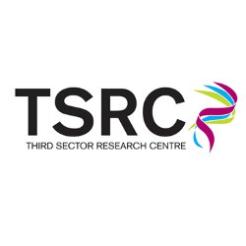The Third Sector Research Centre has found strong evidence of an uneven distribution of charitable resources between communities in its new paper, Mapping the Big Society.
Professor John Mohan, who leads TSRC’s quantitative work at the University of Southampton, says: “Research on registered third sector organisations operating at neighbourhood scale, for example, shows that there are fewer organisations per head in more deprived areas.
"Those organisations operating in more deprived areas are also more likely to be reliant on public funding. Thus the areas with fewest registered third sector organisations are also likely to be in areas most at risk from funding reductions".
TSRC’s paper also explored volunteering. The research showed most people do some combination of volunteering, giving money, or participating in community organisations, even if they don’t do so at every stage of their lives.
However, there are a small number of people, termed the ‘civic core’, that contribute the majority of time and money to voluntary organisations. For example, 31 per cent of the population provides around 90 per cent of hours of unpaid help, four-fifths of money donated to charities, and 70 per cent of civic participation.
This civic core is more likely to be middle-aged, have higher education qualifications, own their house, practice a religion and have lived in the same neighbourhood for over 10 years. Crucially, those groups who are more active tend to be living in the most prosperous communities rather than the most deprived.
Professor Mohan says: “This calls for creative thought about how we match community needs with people who have the time and resources to contribute voluntary effort.”
These figures come from quantitative analysis of registered third sector organisations and national survey datasets, such as the governments National Survey of Third Sector Organisations. TSRC says a criticism of these is that they miss out informal volunteering or small community-based groups. However, TSRC is also actively looking at how to research such ‘below the radar’ activity.
Professor Mohan says: “That’s the advantage of a large national research centre, which contains a broad interdisciplinary mix of academics. The Centre’s quantitative work programme is complemented by a range of qualitative research projects which puts flesh on these somewhat dry statistical bones.”
Professor Mohan further explains that TSRC is establishing the resources to allow new analytical work, which hasn’t been done before. He adds: “We’ve put substantial effort into drawing together over 15 years’ data from the Charity Commission register. This gives us an unrivalled ability to track changes over time in the growth, establishment and dissolution of organisations. Part of the Centre’s role is to take a long view of data needs. Researchers will find that dataset increasingly useful as it builds up over time.”









